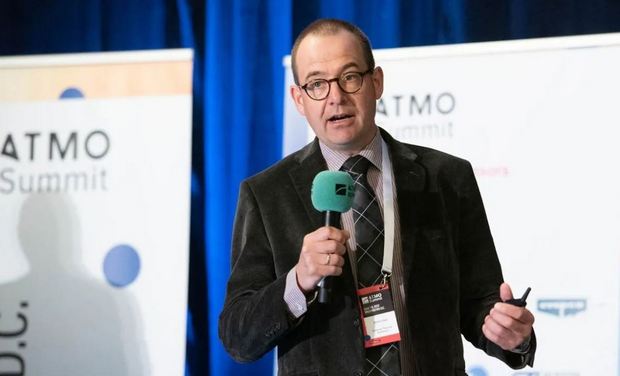CTS research firm shows versatility of CO2

Functioning prototypes show how CO2 (R744) can be successfully used in applications such as bottle coolers, refrigerated containers and mobile air-conditioning without increasing costs or compromising on efficiency as compared to HFCs, according to Stefan Elbel, CEO of Creative Thermal Solutions (CTS), the Urbana, Illinois (U.S.), HVAC&R research company.
Natural refrigerant solutions’ performance, in terms of capacity and efficiency, are on par with HFC baselines, according to Elbel.
“Technology to implement natural refrigerants on a wide scale is readily available,” said Elbel. He highlighted the importance of selecting the right components.
CO2 bottle cooler performance
CTS did a study to compare the performance of various 600L (159gal) beverage coolers that hold up to 600 cans, measuring the pull-down time and energy consumption of R290 and CO2 in comparison to the baseline R134a unit.
R290 outperformed the benchmark R134a system, and CO2 was within 3% of R134a’s energy efficiency at a comparable cost, said Elbel. The pull-down time was improved as compared to R134a. This was achieved through minimal optimization of the CO2 system’s capillary tube and charge.
Low-cost CO2 condensing unit a suitable R448A alternative
Elbel also described CTS’s small, low-cost CO2-based condensing unit designed for commercial applications.
The prototype, with a cooling capacity of about 1.6kW (0.45TR), was developed as an example of what could be achieved in a low-cost CO2 condensing unit with the same efficiency and capacity as a comparable R448A unit. After minimal optimization, CTS was able to achieve the same efficiency and capacity with the CO2 unit as the R448A baseline unit.
Mobile CO2 container outperforms R404A
CTS was asked by the U.S. military to design a piece of specialized equipment – a 6m (20ft)-long multi-temperature refrigerated container for use in a very high ambient temperature (57°C/135°F) environment. The military previously had used R404A in containers and wanted a more sustainable alternative.
The container includes a low-temperature frozen compartment at -20°C (-5°F) that takes up a quarter of the space, with the remaining three quarters for the medium-temperature refrigerated compartment at 3°C (38°F).
“The design challenge was to make the system functional,” said Elbel. The refrigeration system came with severe special constraints and could not exceed 1.8m by 0.6m by 0.6m (6ft by 2ft by 2ft), or weigh more than 550kg (1,200lbs). The design also calls for a cooling capacity of 6kW (1.7TR) and a COP of 1.
To meet the requirements, CTS designed a two-stage transcritical system complete with intercooler and subcritical (booster) compression. It also uses an ejector.
The assembled prototype CO2 container system was able to achieve the required targets, showing an 18% COP improvement as compared to a similar commercially available R404A system.
Potential to replace HFCs with CO2 for air-conditioning
Additionally, CTS was asked to design a system for a high-speed train to replace its R407C air-conditioning system. The company designed a 44kW (12.5TR) conventional dual-circuit system that is very rugged to withstand the harsh operating conditions, Elbel said.
A fully-functional prototype CO2 unit was fabricated for demonstration and evaluation. Results showed a 14% improvement in capacity as compared to the R407C system, plus a 16% COP improvement. “There is great potential for the CO2 unit to replace HFC units,” concluded Elbel.
